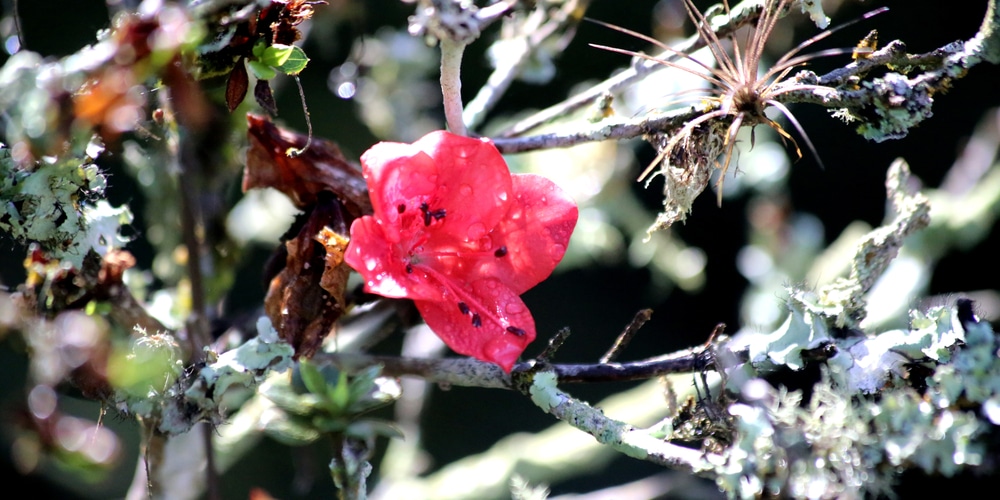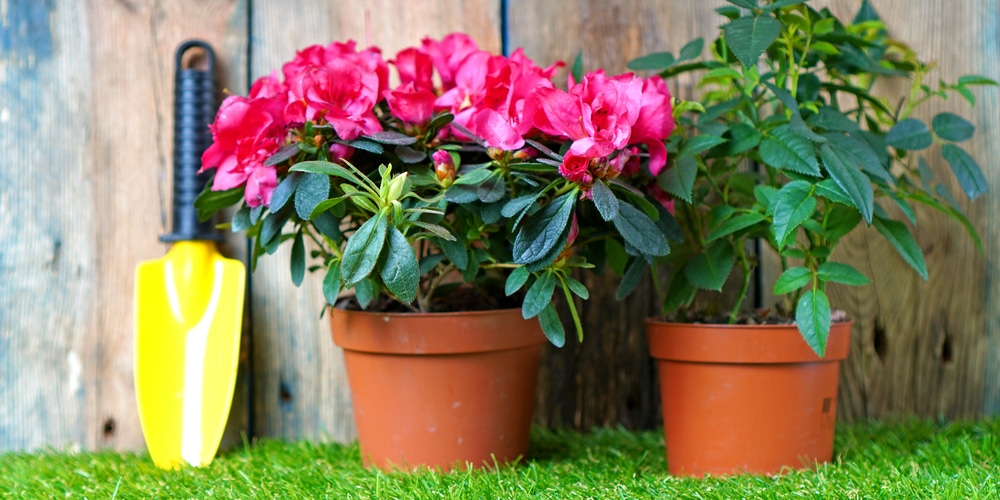Azaleas are at their most beautiful when the weather is warm and when the blooms are in full display. However, the plant’s appearance can change as soon as temperatures start to drop and as frost approaches.
Can Azaleas survive a freeze? What can you do to prevent winter injury?
Can a Freeze Kill Azaleas?
Azaleas, in general, prefer mild climates and relatively moist soil. Snow, frost, and freezing temperatures can be detrimental to their health and this shows up in several ways.
Azaleas can survive temperatures of up to minus 35 degrees F, but there are a few that will exhibit winter damage if the freeze or frost persists at that range.
Those who are living in colder zones will want to specifically plant cold-hardy azalea species that can withstand freezing winters.
Early and late freezes, as well as sudden drops in temperatures, can lead to cold injury. You’ll often see your azaleas develop bark split, dropped buds, and black or brown leaves.
You won’t have to worry too much about leaf discoloration or dropped buds as azaleas tend to bounce back rather quickly and get into full shape and health in the spring.
However, signs of bark split indicate severe damage and the dead branches will need to be pruned off.
Will Azaleas Come Back After a Freeze?
The good news is that azaleas are relatively tough and will usually come back after a freeze or cold spell. These plants can grow in USDA zones 4 through 8, with some species able to survive frosts of up to minus 45 degrees F.
Depending on your plant’s health, where it’s located, and the severity of the weather you may need to do a few things to ensure your azaleas make it through a hard freeze.
How to Protect Azaleas Against Freeze and Winter Injury
Wean Off Fertilizer and Reduce Watering
The last fertilizer feeding should be done in early summer so your azaleas can prepare for the incoming cold, and achieve dormancy at the right time. It’s likely that new growth will get damaged by the frost, and your plant will be caught unawares and unable to properly harden off.
It’s recommended that you water your azaleas as long as the temperature stays above 40 degrees F. Then, water after a few hard freezes to keep the plants from drying out.
Add Some Mulch or Cover
Adding a few inches of mulch can benefit your azaleas in several ways. One, available moisture will be taken in by the plant’s roots; and two, soil temperature around the azaleas will stabilize. Your azaleas’ roots won’t be as affected by hard freezes and have a higher chance of surviving a particularly brutal winter.
Also, putting on covers or windbreaks on azaleas is optional, but it helps protect them against the chill of the wind and plummeting temperatures come nighttime.
You can use old bedsheets or similar fabric material, or snow fencing and burlap to drape over your plants. Cardboard boxes and blankets work in a pinch as well.
Bring Potted Azaleas Indoors
Plants in pots and containers are much more likely to experience cold injury as their soil temperatures are much colder compared to those on the ground.
You can move potted azaleas where it’s much warmer, such as against a wall or the side of your house, or even on a covered porch. Or, you can bring the whole plant indoors and then relocate it outside once the threat of frost has subsided.
After the winter, it’s best to inspect your azaleas and prune out any dead branches or leaves. Remove unopened buds and cut back to green growth as necessary.
Related Article: How Far Apart to Plant Azaleas?



